
ZTE has been in the Australian marketplace for a while now, albeit as a white label supplier for the three major telcos to offer their branded phones. But ZTE has been moving towards becoming known in Australia, and has begun building their with a renewed focus on becoming a household name alongside other Android OEM’s like Samsung, HTC and Sony..
When Optus and ZTE announced a new low cost 4G smartphone, the ZTE Fit 4G Smart prepaid phone with a price point of $99, we wanted to take a look at the phone. Not everyone can afford high end devices and are just looking for something cheap that can allow them to stay connected to friends either through social media or normal telecommunications means like calls or texts.
Now while the price is very attractive, most of us would discount the smartphone purely based either on perceived low-end spec listed for the phone. The ZTE Fit 4G Smart does offer one bonus that many higher specced, and priced phones don’t – the device has purely been designed to be compatible with the new 700MHz spectrum being rolled out around Australia.
So can the ZTE Fit 4G Smart mobile phone be able to the everyday demands of our socially connected lifestyles our mobiles have become to us all? We aim to find out for you and of course us as well.
- Stock Android experience
- Little to no carrier bloatware
- Fast connection to Optus’ 700MHz spectrum
- IPS display isn’t great
- 5MP Rear & 2MP front facing cameras leaves a lot to be desired
- Onboard memory can run out quite quickly
Design and Hardware
With their current design language leaning towards lower end materials such as plastic, ZTE are still able to build a well priced phone that still looks polished and refined.
The Fit 4G Smart is made from a polished, smooth black plastic which though looks pretty good, does make the device feel a little cheap, but this is what the Fit 4G Smart is made for really. The only drawback with the glossy plastic finish on the sides and back of the device, is that fingerprints are an issue, so a phone cover might be a go should you not want to spend your life cleaning fingerprints off your phone.
The bottom half corners have been rounded off slightly, which is nice touch. However there is a clear difference when going from the front to the rear of the phone, with an almost sharp edge surrounding the top sides. An angled cut between the front and sides of the phone could have made the phone more fluid and free flowing, at least design wise.
On the right hand side of the phone you’ll find three buttons for power, as well as the up/down volume rocker. While on the left hand side you get the microUSB port – an odd placement to be sure, which may give issues if you find a generic case for the phone.
Though the usb port is in an odd position, ZTE has gone the traditional route with the 3.5mm audio jack, placing the jack at the top of the Fit 4G Smart.
Front and centre of the phone is the 4.5” display, which features a front-facing speaker, as well as 2MP ‘selfie’ camera.
ZTE have made some interesting choices with their capacitive buttons for the Fit 4G Smart. There’s three capacitive buttons, with a small blue circle in the centre for a home button, straddled either side by two buttons with small dots on them. The only problem was trying to work out which button does what. For example, the dot on the right hand side is the access point for the widget and wallpaper option/shortcut, whilst the left hand side dot is the back button.
The rear of the phone is fairly standard, with a speaker located on the left hand side towards the bottom corner, and a 5MP camera and LED flash at the top in the centre.
Under the hood of the Fit 4G Smart, is a 1.3GHz MTK Quad core processor and 1GB of RAm, a combination that works well even on an entry level phone.
Storage on the phone is fairly limited, with 8GB flash storage included, 4.6GB of which is user accessible. The memory is expandable to 32GB via microSD and I would suggest that this would be a necessity when purchasing the phone to store extra music, movies, photos etc.
There is also Wi-Fi 802.11 b/g/n, Bluetooth Smart version 4.0 LE (Low Energy), A-GPS, along with stand-alone GPS. To power the whole shebang, a 2200mAh Li-ion removable battery is included, which ZTE say will give up to 9hrs talk time or up to 180 hours on standby.
Display
The ZTE Fit 4G Smart comes with a 4.5” IPS display which is ok to use, but as expected, when compared to flagship devices like my Galaxy Note 4 and even the slightly older HTC One M7, it isn’t as crisp or bright.
Coming down the line – when comparing to something like the HTC One Mini 2, the screen does seem to either be on par or perhaps a little less. The screen has a bit more bezel along with more shadows and with a slightly lower pixel density, the pixels on the Smart Fit are visible to the naked eye.
In daylight, the Fit 4G Smart is ok to use if there is low sunlight, however in direct sunlight this is where you begin to notice your own reflection in the screen. Whether this could have been resolved with a higher spec’d type of display or anti-glare protection is a possibility, but again cost was a factor here.
This all said, the screen did well when used inside and was ok in a very brightly or well lit office but again the only stumbling block was really outdoor usage.
Connectivity
The main selling point for the device at the end of the day, is the ability to utilise Optus’ now 5 month old 700MHz 4G network, which when in a coverage zone does perform quite well. Data transfers or loading up website from the chrome browser of apps have been quick when utilising the Optus 4G+ service.
Of course the 3G coverage and usability has been ok for the Fit 4G Smart, though lately there has been a few black-spots or areas where 3G coverage was slow or non-existent. However, this is more an indicator of the issues with the Optus 3G network than a reflection on the phone and Optus continues to work on their 3G network.
WiFi connectivity was strong, as is the case for pretty much any device nowadays. The Smart Fit includes WiFi connectivity for 802.11 b/g/n, allowing for little to no drop outs when connected to WiFi.
Bluetooth wise, the Fit 4G Smart includes support for 4.0 LE (Low Energy) available, meaning pairing to say my Asus ZenWatch was a breeze and did not disconnect unless prompted to do so.
Miracast ability was not available from what I could see. There was no further options for any TV-opt or infrared ports or capabilities available. Though, ability to connect to my Chromecast was as straightforward as expected.
GPS is also available and was pretty accurate when utilising apps such as Google Maps, Waze and Nokia Here Maps.
Performance
The overall performance of the mobile was quite good, given the 1.3GHz MTK Quad core processor under the hood. With 1GB Ram you can load apps, play games, surf the web, all without too much trouble.
Going between apps was ok, with little stutter or delay at first, however there was a couple of times where I could tell the device was slowly beginning to strain at the end of the day. Re-booting the mobile phone does help a little but again the strains or at least stuttering can come back after a while, again during heavy usage.
Benchmark wise, the ZTE Fit 4G Smart did somewhat ok when compared to the original HTC One (M7), Redmi Note, MI 2 and the Asus ZenPhone 5 according to the AnTuTu Benchmark score, whilst the Geekbench had the Fit 4G Smart at 640 benchmark that meant it did a fair bit better than the Nexus 7 (2013), Xperia Tablet Z & Xperia Z along with the Nexus 4. Still with these benchmarks, it’s not too bad at the end of the day.
Sound
The sound performance from the rear speakerphone on the Fit 4G Smart was to say the least, not terribly spectacular.
The sound through the rear speaker phone was clear for phone calls, although at full volume clarity was lost, which was the same when playing audio from games and apps. If you’re looking for a great speaker, you’re better off looking elsewhere, but it is satisfactory.
Camera
The Fit 4G Smart comes with a 5MP rear camera, which at first isn’t all that great. At first, the camera appears to snap ok photo’s, however once transferred to a computer I noticed the pictures seemed a little grainy but also had a bit of noise within the pictures themselves. At 5MP you can’t really expect GREAT things from the camera, but it’s something that could be improved on in software.
Even manually trying to play with the settings to see if pictures turned out much better was a feat to say the least and really didn’t improve things.
When looking at the front-facing 2MP camera there isn’t much to sing about. Even in a well lit area, I couldn’t make photos turn out very well. Something in the light sensing, white balance or processing seemed off. Pics had a graininess which seemed quite apparent with a fair bit of noise and shadow very apparent within the pictures. Even with the selfie setting on, it made no real difference.
To be honest, the selfie addict would have a hard time trying to take a clear, almost HD quality selfie photo – but again, 2MP is well within the realms of a budget conscious phone.
Whether or not a software update for the camera could fix these issues remains to be seen and quite possibly may not occur really given the phone isn’t designed really to take high quality DLSR like photos at the end of day. Still, it is a little disappointing.
Software
The Fit 4G Smart mobile comes with Android 4.4.4 (Kit Kat) which does look a little like it has a skin over the top, and this was confirmed, with ZTE advising that their MiFlavour UI had been applied. The ZTE Smart Fit 4G runs stock Android underneath but carries a few design elements from the MiFlavour UI available on other ZTE devices around the world. These are simply UI changes, with no discernible effect on the stock Android running beneath.
However it is an interesting design given to apps and is refreshing to see another company put their own skin/UI over stock Android without actually physically implementing changes. This would seem that ZTE where just wanting to add its own take on to stock Android.
The stock Android experience did seem very smooth and free flowing with no stutter or freezing when going between apps or screens which is also a good sign.
We have been able to confirm though that ZTE is not planning to update the Fit 4G Smart to Android 5.0 (Lollipop) at this time and in all honesty I wouldn’t be expecting it. Though a platform level update isn’t in the pipes, ZTE Have advised that a general bug fix with a flatter design was in the works, though no eta was given for this to arrive on handsets.
Bundled Apps
The Fit 4G Smart comes with a suite of pre-installed apps which include both a mixture of ZTE’s own apps alongside Google’s own usual apps.
The ZTE apps included are as follows:
File Manager, Email app, Music app, FM Radio, Downloads, Camera, Browser, Backup & Restore, Movie Studio, Sound Recorder, Video’s, System Updates, ToDo, TouchPal X which is a keyboard that can be applied over the stock Android keyboard if you wish to use this instead.
As well as installing these apps – which for the most part offer enhanced functions from the default software load on a ‘Pure Android’ device, ZTE has also replaced the AOSP/Google versions of the Clock, Gallery, Calculator, Phone, Messenger and Contacts apps.
Given the Fit 4G Smart is an exclusive Optus pre-paid device, I would have expected to see more pre-installed “bloatware” on the device, but to my surprise, the only pre-installed carrier app was the MyOptus app, which again is a very nice surprise – and a surprisingly useful app for Optus pre-paid customers.
ZTE FIT 4G Smart
- 2G: 850, 900, 1800, 1900 MHz
- 3G: 900, 2100 MHz
- 4G: 1800 (Band 3),2600(Band 7), 700 (Band 28), 2300TDD (Band 40) MHz
- Dimensions: 144 x 70.7 x 7.9mm @ 154g
For $99, isn’t too bad, but it’s also not that great. Lets be honest, the main selling point, at least for me is that the phone has the ability to connect to Optus’ new 700MHz 4G network, and on that front it certainly delivers.
The ZTE Smart Fit 4G runs stock Android underneath but carries a few design elements from the MiFlavour UI available on other ZTE devices around the world. These are simply UI changes, with no discernible effect on the stock Android running beneath.
It is disappointing that the device won’t see an update to Android 5.0 (Lollipop) but again that wasn’t really expected to be the case. At least a single platform update should be something that manufacturers should try to think about when coming out with any device, even something aimed at the lower end of the market.
Taking everything into consideration, if you’re after a cheap device that either won’t break the bank or even just after a spare device, then I would say the ZTE Fit 4G Smart might the the device you’re looking for.
The Fit 4G Smart is available now from your local Optus store or via the Optus pre-paid website for $99. The Fit 4G Smart is locked to Optus, so an unlocking fee may apply should you wish to buy the Fit 4G Smart to use on another network.

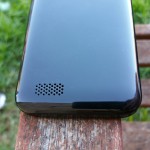




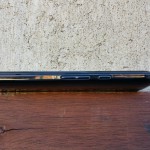
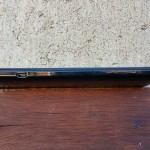
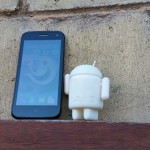
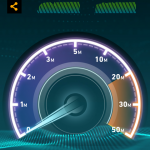



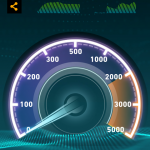
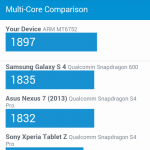


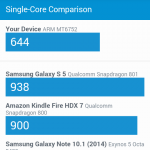
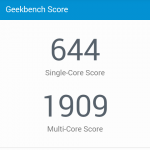
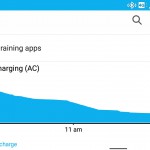


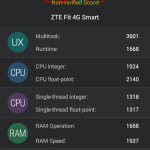

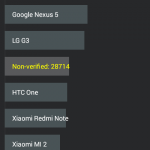

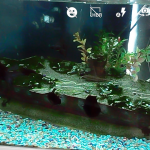
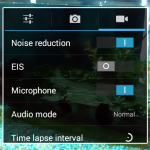
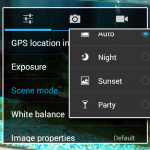



















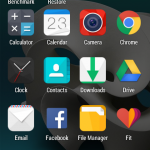
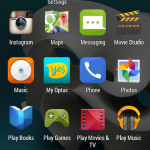

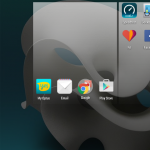
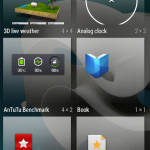

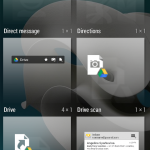
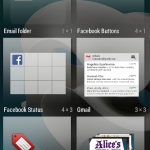
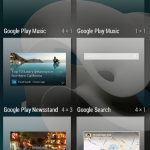
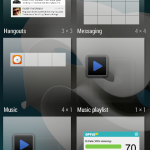
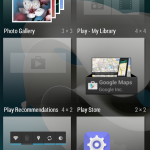






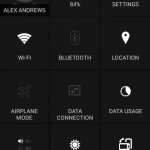
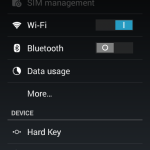
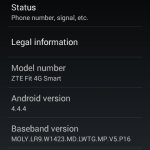
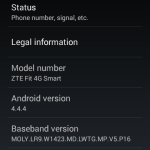

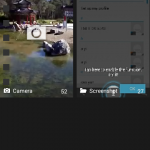



This phone is rubbish, don’t buy it! I brought one just under a year ago, it kept over heating asking to me to remove the battery, several times a day, the phone itself would get REALLY hot to touch, and when I dialled a number it would take forever till I heard an actual ring, could take up to 5mins before any dial tone was heard. Not more then 3months of use I had to send it back for another replacement, they just gave me a new zte phone, to which it did the exact same thing that the first… Read more »
On Sale for $49.50 at Woolworth’s Supermarkets from July 29th.
Is it locked still?
Did you mean “Is it still carrier locked to OPTUS?”
If so, yes it is – but you can buy an unlock code for $10.
A great review of a budget device.
🙂
A few questions:
What was the real world battery life like?
How well did the capacitive buttons behave when trying to access the Recent Apps list?
Could the camera manage to capture barcodes and QRCodes?
Battery was average really and was like most smart phones in which you would need to charge it almost every night.
The camera did have a little trouble scanning QR codes in very bright or dark rooms which is to be expected really
Typos below the first set of photos:
“Though the usb port is in an odd position, Alcatel has gone”
“Alcatel have made some interesting choices with their capacitive”
I thought this was a ZTE device.